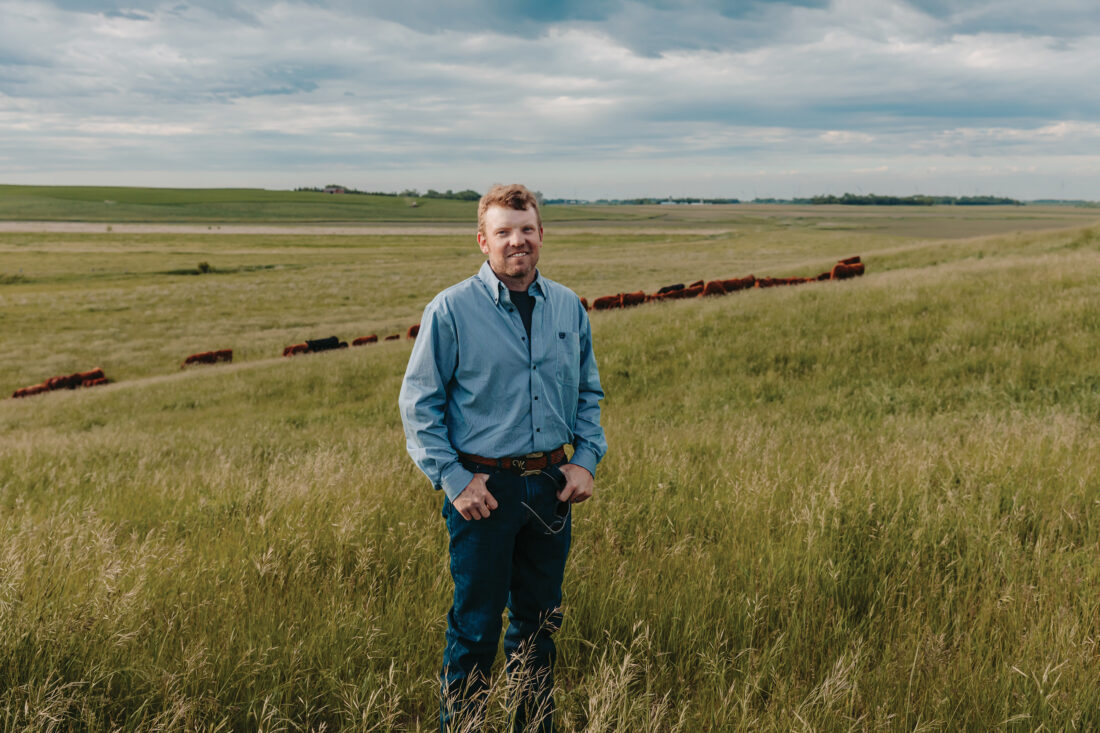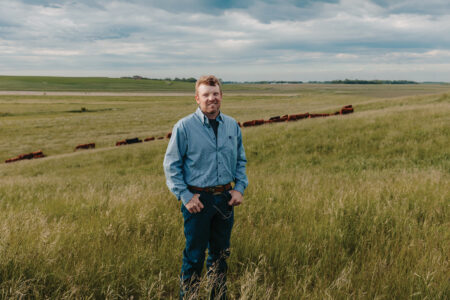Farming on the beef roller coaster
Supply and demand: Low inventory leads to high prices

Photo courtesy of Michelle Weber Studio Lake Benton beef farmer Jesse Weber says he has never seen prices so “crazy” in his 30 years of agriculture.
Less supply, more demand.
That seems to be the reality of the beef industry right now.
The driving factors are complex including drought conditions, shifts in temperatures and precipitation, higher costs of raising and feeding cattle, the health of the cattle including disease and pest issues, and the steady customer demand of beef for it’s taste despite escalating prices.
Per the U.S. Bureau of Labor Statistics, average ground beef climbed to a record of $6.34 per pound in July and uncooked beef steaks were listed at a record high of $11.88 per pound. Compared to a year earlier, it was $5.62 and $10.86.
“The majority of the beef on the shelves for consumers to buy is imported from other countries which is part of the reason for the prices and sometimes short supply. The U.S. is the largest beef producer in the world…Right now the market is working for the producer to make that living and provide for his family. Unfortunately, the consumer is paying more for that,” said Greg Stuefen, a local cattlemens/cow calf producer.
Jesse Weber of North Lake Benton, who has been farming cattle for nearly 30 years says these “never before seen” beef prices are “crazy” and “a little scary.”
On one hand, he notes, it’s good for business but on the other hand, how long will it endure is unpredictable unknown.
“The only thing you worry about is the public not buying anymore,” he said. “It’s not our fault as producers. There is just not enough of us anymore. The reason for these high prices is there is not the cattle out there. And that is why it’s a supply and demand issue. It’s a very hard business to get into. It’s very labor intensive, and a lot of guys just don’t want to deal with the beef cow herd anymore. We are at all time low inventories and we are at all time high cattle prices.”
Beef expert Andrew Coppin who has worked with cattle producers across the country agrees that it is an interesting and challenging time for the beef industry. He says beef is high quality protein and American consumers passion for beef is “real and growing” and is unlikely to change anytime soon unless costs continue to skyrocket.
“The outlook is strong for pricing and that is great for ranches,” Coppin said. “There are a few other elements that need to be taken into consideration. You’ve got the Mexico border which is currently closed for importing Mexican beef cattle. We normally import about a million cattle a year from Mexico. So at the moment, that’s cut off. That is adding to price pressure. And the other thing is what happens with tariffs with countries. We import a lot of beef from Brazil and obviously if those tariffs get set very high, then I think the risk to the beef price is higher over the coming few months if those negotiations don’t go well.”
Additionally, Coppin says in relation to supply and demand, ranches are working to rebuild herds but it is challenging since demand is rising and so too are prices. Plus, the capricious weather, he says is also adding challenges.
“We’ve got a lot of weather volatility,” he said. “If you are a cow calf operator and you are breeding young cattle, you need to make sure you’ve got pasture. One of the big contributors to why we have got all-time low herds is because we’ve had all-time weather volatility. Hotter, wetter droughts across 30% of the country still prevails. So it’s really a difficult decision for ranchers to decide, am I going to grow more cows? Cause if I’m going to buy them, I need to make sure I’ve got feed. And if I have to buy feed, the input cost of feed is has also been going up. The input costs for ranches are high, even though the prices are high.”
For now, the roller coaster of supply and demand plays on and so far, most consumers are not saying no to beef.
“I hope going forward we can find a happy medium or a balance for everybody, but right now, it’s just a supply and demand issue,” Weber said.


